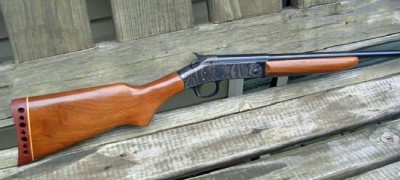What are the two most common gauges for shotguns right now? The 12 gauge and 20 gauge.
Sure, 32 gauge, 28 gauge, 10 gauge and even 8 gauge all exist, but when it comes down to it, the 12 gauge and the 20 gauge are the gold standard for shotguns. Why? Simply because they’re largely the only shotguns that people think they need.
To an extent, that is true. The 12 gauge is a military round and offers all the knockdown power in a shotgun that you will need. In a close-quarters situation, there really is no better self-defense weapon than a simple pump-action 12-gauge shotgun.
And the 20 gauge? It offers significantly less recoil than the 12 gauge, but also the stopping power equal to two .44 magnum rounds coming at you.
The 12 and the 20 gauges are extremely versatile, and the ammunition for both is relatively cheap.
Looking At An Often-Forgotten Shotgun
So, what should anyone consider a .410 bore shotgun? After all, many people see the 20 gauge as the perfect entry-level shotgun, as well as an excellent skeet or trap round and a good self-defense round for those who can’t handle the more powerful recoil of the 12 gauge.
Ultimate Tactical Self-Defense And Hunting Weapon That Doesn’t Require A Firearms License!
The .410 shotgun is not a gun that is a necessity for a survivalist or prepper. If you own a 12 and a 20 gauge, your bases are pretty much covered. Nonetheless, the .410 is still a “fun round” that will make a very cheap and enjoyable addition to your gun collection.
First of all, there is no better beginner round than the .410 when it comes to shotguns. Yes, the 20 gauge and sometimes the 28 gauge hold the reputation for being the best beginner round. But if you are training your children to shoot, the .410 is the perfect entry level shotgun. Keep in mind that for a fully grown adult, the 20 gauge doesn’t offer bad recoil. But that recoil is going to seem significantly higher to a child. The .410 recoil won’t even feel bad for a child who is just beginning to shoot.
Next, the .410 definitely gets the job done when it comes to small upland birds like quail and grouse. While the 20 gauge is typically used for these kinds of birds, the .410 will drop them with one shot and without making a mess of the meat, almost guaranteed. The .410 is the perfect grouse or quail shotgun.
Other Benefits Of The .410
If you really want to challenge yourself in skeet and trap shooting, go with the .410. The .410 has less of a scatter pattern than the 12 and 20 gauges, meaning that you have to really be aiming at what you plan to shoot. If you consider yourself proficient with the 12 and/or 20 gauge at skeet and trap, challenge yourself and try your hand with the .410. It’s definitely fun.
Did you know that .410s are cheap — as in extremely cheap? New or good condition used .410s can be bought for around $100 or less. Granted, these will be single shot, breech-loading shotguns, but that’s all you would really need in a .410 as well.
Other options for a .410 shotgun include Mossberg 500 home-defense shotguns, which really are good options for someone who doesn’t even like the recoil of the 20 gauge. Many gunowners discard .410s as not being decent home-defense rounds, but in true close quarters, this simply isn’t true. An assailant who gets shot with a .410 at close range will know they’ve been shot.
There are also a few double-action revolvers, such as the Taurus Judge and the Smith & Wesson Governor, which shoot .410s and .45 LCs. Many consider these revolvers to be some of the best home defense weapons that are currently available.
The .410 still holds a place in our gun culture today. It may not be as important to own as a 12 or 20 gauge, but for $100 bucks, you’ll have a lot of fun and one of the perfect guns available for teaching your young kids to shoot.
Do you have any tips for using .410s? Share them in the section below:
 Off The Grid News Better Ideas For Off The Grid Living
Off The Grid News Better Ideas For Off The Grid Living





